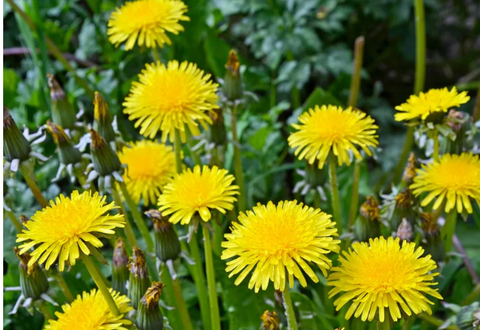Introduction
Welcome to the lush world of flowering vines! In this guide, we'll explore the art and science of cultivating these botanical marvels, transforming your garden into a vibrant tapestry of color and texture. From enhancing aesthetics to creating natural privacy screens, flowering vines offer endless possibilities for elevating your outdoor space. The following content also has some reference value for raised garden beds.
Benefits of Growing Flowering Vines
Enhance Garden Aesthetics
Picture a garden adorned with cascading blooms of wisteria or the delicate tendrils of jasmine. Flowering vines not only add visual allure but also infuse your garden with a touch of enchantment, creating a picturesque landscape straight out of a fairy tale.

Provide Vertical Interest
Tired of flat, uninspired gardens? Enter the world of vertical gardening with flowering vines. These botanical climbers breathe life into bare walls, trellises, and fences, adding depth and dimension to your outdoor oasis.
Create Natural Privacy Screens
Bid farewell to nosy neighbors and prying eyes with flowering vines as your green guardians. Whether draped along fences or trained to climb arbors, these verdant beauties create natural privacy screens, shielding your sanctuary from the outside world.
Selecting the Right Vine for Your Garden
Consider Climbing Habits
Before choosing a vine, acquaint yourself with its climbing habits. Some vines, like the twining glory of morning glories, wrap themselves around supports, while others, such as the adhesive tendrils of ivy, cling to surfaces with ease. Match the climbing habit to your garden structures for a seamless fit.
Evaluate Sunlight Requirements
Just like us, flowering vines crave their share of sunlight. Some species, like the sun-loving clematis, thrive in full sun, while others, such as the shade-seeking hydrangea vine, prefer dappled light. Assess your garden's sunlight exposure and select vines that align with its natural conditions.
Assess Soil and Water Needs
Dig beneath the surface to understand your vine's soil and water preferences. Whether your garden boasts rich loam or sandy soil, ensure it meets the vine's requirements for moisture and drainage. With the right soil and water conditions, your vine will root deeply and flourish in its new home.
Preparing the Growing Area
Choosing the Ideal Location
Location, location, location – the mantra of real estate applies to gardening as well. Select a site with adequate sunlight and space for your vine to spread its roots and reach for the sky. Consider factors like proximity to structures and nearby plants when choosing the perfect spot.
Preparing the Soil
Prepare the stage for your vine's grand entrance with well-prepared soil. Loosen compacted earth, remove debris, and enrich the soil with organic matter like compost or aged manure. A nutrient-rich soil provides the foundation for robust growth and bountiful blooms.
Providing Support Structures
Just as vines rely on sturdy supports to climb, your garden relies on you to provide them. Install trellises, arbors, or pergolas as climbing frames for your vine's ascent. Ensure these structures are firmly anchored in the ground and capable of bearing the weight of mature vines.
Planting Flowering Vines
Digging the Planting Hole
Prepare a warm welcome for your vine with a spacious planting hole. Dig a hole twice as wide and deep as the vine's root ball, allowing ample room for growth. Loosen the soil at the bottom of the hole to encourage root penetration and establish a strong foundation.
Adding Organic Matter
Treat your vine to a feast of organic matter by incorporating compost or aged manure into the planting hole. These nutrient-rich amendments nourish the soil, providing essential elements for healthy growth and development. Mix the organic matter thoroughly with the surrounding soil to create a harmonious blend.
Placing and Watering the Vine
Gently remove your vine from its container and position it in the center of the planting hole. Backfill the hole with soil, ensuring the vine sits at the same depth as it did in the container. Water the vine generously to settle the soil and provide a refreshing drink for its thirsty roots.
Training and Pruning Techniques

Training Vines to Climb
Guide your vine on its upward journey with gentle training and support. Encourage tendrils to grasp onto trellises or arbors, gently coaxing them in the desired direction. As your vine grows, provide additional support with soft ties or twine to prevent damage to delicate stems.
Pruning for Health and Shape
Shape your vine into a masterpiece with the art of pruning. Remove dead or diseased branches to promote airflow and prevent the spread of pests and diseases. Shape the vine to your desired form, whether it's a tidy hedge or a wild and freeform display.
Managing Overgrowth
Keep your vine in check with regular maintenance and pruning. Trim back overgrown branches to maintain their desired size and shape, preventing them from encroaching on nearby plants or structures. With judicious pruning, your vine will stay healthy, vibrant, and ready to bloom.
Providing Proper Care and Maintenance
Watering Requirements
Maintain consistent soil moisture levels to ensure the health and vitality of flowering vines. Water newly planted vines deeply and regularly to help establish strong root systems, then gradually taper off watering once the vines become established. Monitor soil moisture levels regularly, especially during hot and dry periods, and adjust watering frequency as needed to prevent drought stress. Avoid overwatering, as excessive moisture can lead to root rot and other fungal diseases.
Fertilizing Schedule
Nourish your vine with a balanced fertilizer to fuel its growth and flowering potential. Apply a slow-release fertilizer in early spring, following the manufacturer's instructions for application rates and frequency. Avoid over-fertilizing, which can lead to excessive foliage growth at the expense of blooms. With proper fertilization, your vine will receive the nutrients it needs to thrive and flourish.
Pest and Disease Management
Keep an eye out for unwelcome guests in the form of pests and diseases that may threaten your vine's health. Common pests include aphids, spider mites, and scale insects, while diseases like powdery mildew and leaf spot can also take their toll. Monitor your vine regularly for signs of infestation or disease, and take prompt action to address any issues using organic or chemical controls as needed.
Dealing with Common Issues
Addressing Pests
If pests are plaguing your vine, take swift action to control their population and minimize damage. Consider using insecticidal soap or horticultural oil to target soft-bodied insects like aphids and spider mites, or introduce natural predators such as ladybugs or lacewings to keep pest populations in check. Regularly inspect your vine for signs of pest activity and intervene early to prevent infestations from escalating.
Managing Diseases
Disease prevention is key to maintaining a healthy vine. Ensure your vine receives adequate airflow and sunlight to discourage fungal diseases like powdery mildew and downy mildew. Avoid overhead watering, which can promote moisture accumulation on foliage and increase the risk of disease. If disease does occur, treat it promptly with fungicidal sprays or other appropriate controls to prevent its spread to healthy parts of the vine.
Handling Overgrowth
If your vine starts to outgrow its allotted space, don't panic – pruning is your friend. Trim back overgrown branches to maintain the vine's desired size and shape, focusing on removing dead or diseased wood first, then selectively thinning out crowded or tangled growth. Consider rejuvenation pruning for older or overgrown vines to encourage fresh, vigorous growth from the base. With careful pruning, you can keep your vine in balance and prevent it from becoming unruly.
Enhancing Growth and Blooming
Encouraging Flowering
Boost your vine's blooming potential with proper care and attention. Provide adequate sunlight, water, and nutrients to support robust growth and flowering. Deadhead spent blooms regularly to promote continuous flowering throughout the growing season and remove any dead or diseased wood to redirect the vine's energy toward new growth and blooms.
Supporting Pollinators
Invite pollinators to your garden by planting flowering vines that attract bees, butterflies, and other beneficial insects. Choose vine species with nectar-rich blooms and provide additional nectar sources like flowering shrubs or perennials to sustain pollinators throughout the season. By supporting pollinators, you not only enhance your vine's blooming potential but also contribute to the health and biodiversity of your garden ecosystem.
Extending Bloom Period
Prolong the beauty of your vine's blooms by selecting species with extended flowering periods or planting complementary varieties that bloom at different times. Mix early, mid, and late-flowering vines to ensure continuous color and interest in your garden throughout the growing season. Consider planting annual vines alongside perennial varieties to fill gaps and provide seasonal accents in your garden landscape.
Creative Uses of Flowering Vines in Landscaping
Trellises and Arbors
Transform ordinary structures into stunning focal points with the addition of flowering vines. Install trellises or arbors as vertical accents in your garden and train vines to climb and cascade over them, creating a living tapestry of color and texture. Choose vine species with showy blooms and fragrant flowers to enhance the visual and sensory appeal of your garden space.
Vertical Gardens
Explore the art of vertical gardening with flowering vines as your canvas. Plant vines in containers or hanging baskets and arrange them vertically on walls, fences, or pergolas to create living green walls and vertical gardens. Mix and match vine species with different colors, textures, and growth habits to create a dynamic and visually striking display.
Natural Screens and Borders
Create privacy and definition in your outdoor space with flowering vines as natural screens and borders. Train vines to climb along fences, walls, or lattice panels to create living partitions that provide seclusion and separation. Choose fast-growing vine species with dense foliage and vigorous growth habits to create an effective and attractive barrier in your garden landscape.
Troubleshooting Tips for Challenges
Wilting or Yellowing Leaves
If your vine's leaves are wilting or turning yellow, it may be a sign of underwatering, overwatering, or nutrient deficiencies. Check the soil moisture levels and adjust your watering schedule accordingly to ensure the vine receives adequate moisture. Conduct a soil test to assess nutrient levels and amend the soil as needed to correct any deficiencies.
Lack of Blooms
If your vine fails to produce blooms, it may be due to insufficient sunlight, pruning at the wrong time, or nutrient imbalances. Evaluate the vine's sunlight exposure and prune any overgrown branches to improve airflow and light penetration. Ensure the vine receives adequate nutrients by fertilizing it with a balanced fertilizer according to the recommended schedule.
Stunted Growth
If your vine's growth is stunted or slow, it may be due to poor soil conditions, pest infestations, or disease. Check the soil for compaction, drainage issues, or nutrient deficiencies and address any underlying soil problems. Inspect the vine for signs of pest activity or disease and take appropriate measures to control infestations and prevent further damage.
Conclusion
In conclusion, growing flowering vines is a rewarding and fulfilling pursuit that adds beauty, charm, and vibrancy to any garden landscape. By selecting the right vine for your garden, providing proper care and maintenance, and exploring creative uses in landscaping, you can enjoy a lush and vibrant display of blooms throughout the growing season. With a little patience, care, and creativity, your garden will flourish with the enchanting beauty of flowering vines for years to come.









